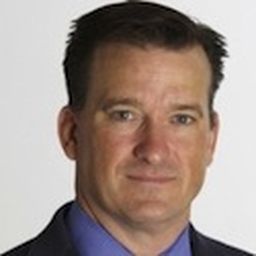
Kaseya CEO Fred Voccola is set to meet with the company's board of directors within the next two weeks. For both him and the MSP software company, the timing is especially symbolic. This month marks one year since Kaseya publicly named Voccola as CEO -- succeeding CA Technologies veteran Yogesh Gupta in July 2015.
From 2013 to 2015, Kaseya went through a mix of leadership and ownership changes, and some layoffs. In many ways, Kaseya was a company in transition during Voccola's first six months on the job. He inherited a mix of home-grown and acquired products that hadn't quite jelled together in recent years. Plus, Kaseya was often considered a two-headed software company -- focusing one day on midmarket IT managers and the next on MSPs.
Fast forward to present day and there are signs of progress. I certainly don't want to hype the progress -- especially amid continued growth for many MSP software companies, several of which are far larger than Kaseya. But there are tangible milestones worth noting at Kaseya.
In an interview with ChannelE2E, Voccola says Kaseya has exceeded its business goals in each of the past three quarters. Headcount also is growing, with roughly 380 employees in place and another 20 positions expected to be filled. And potential acquisitions -- some small, some large -- are on the horizon. Here's a closer look at our conversation with Voccola, along with ChannelE2E reactions and perspectives.
ChannelE2E: You've been on the job a year. Rewind to when you first heard about the CEO position. Now fast forward to today. Has the position been what you expected, or completely different from your early expectations?
Voccola: It's the most fun I've ever had working. It's a great market. The customers -- the MSPs -- are awesome, as you know. The part that has been most interesting involves the fact that the market is 'growing massively' but also 'evolving massively' at the same time . Amid those market trends, our job is to provide software solutions that allow MSPs to make money.
The first year aligned with my expectations. I spent a lot of time looking at Kaseya before coming to the company. I didn't interview and just jump in. It was a process. And I brought my key executives with me. We had a plan coming in. I spoke with about 40 to 50 customers before joining. And my discussions with Insight Venture Partners helped to set expectations.
ChannelE2E: What do you view as Kaseya's top 2 or 3 company milestones under your leadership the past year?
Voccola: I've been thinking about that question ahead of our board meeting in two weeks. There are several things the company has done that make be proud:
- We've become customer-centric. If you speak with 500 Kaseya customers last year vs. today, you'll hear that MSPs now understand Kaseya is committed to their success. Becoming a customer-centric organization has really involved turning around the culture internally, and it's been seen by the customers. I've spoken with 200 in one-to-one, personal conversations. People know we're listening. We know that if we don't get the MSP software right then the MSPs suffer. We're getting it right. We now have 120 people in our customer success organization; that organization didn't really exist last year. Instead, there were like 35 people scattered about the company last year with no unifying purpose.
- We've become employee-centric. That doesn't mean everyone can leave at 2 p.m. daily. But you do have to properly empower employees for success, and you let them perform without building a top-down dictatorship. We've empowered our line-level managers. Being happy is one thing. Having job satisfaction is another. People feel empowered. Roughly 90 percent of all decisions that a business makes are made by individual contributors and line-level managers. If you're not employee-centric, you can't become customer centric.
- We've got IT Complete, an integrated platform that really aligns with MSPs -- and gives them one integrated platform to offer as manage recurring revenue-generating services as they'd like.
ChannelE2E: Now that you're embarking on year-two in the CEO role, how are your priorities and the company priorities evolving?
Voccola: We had a plan on how to structure the company, and how to create a customer- and employee-centric business. We've done that. Now my job is to continue improving customer service and success. But I'm also thinking about where MSPs need to be in three years. What do we need to build vs buy for those long-term MSP needs?
We're looking at more companies to potentially buy. And we're looking at innovative products to build and release.
ChannelE2E: Does that mean you'll consider small tuck-in acquisitions or would you do larger deals that rival Kaseya in size?
Voccola: Yes to both. We have the deepest pockets in the business. We could buy someone as large as Kaseya -- or even larger than us. We're actually looking at a few opportunities right now.
ChannelE2E: How would you describe Kaseya's current performance, and how is product quality these days?
Voccola: Our business is growing. We substantially exceeded our target numbers in each of our past three quarters. My board meetings have been very happy and very good. I'm surprised at the strong growth rate of RMM. We are seeing 50 percent of our wins involving new MSPs making first-time RMM investments. For networking and IoT monitoring our Traverse offering is exploding in popularity. For PSA we've signed up over 400 logos since we started sales in February. For security, I figured identity, access management, multi-factor authentication and password management would all take off by 2018 or 2019 but it's happening now as SMB attention on security has intensified.
ChannelE2E: What about a push beyond PC, server and network management? You've got 365 Command for Office 365 management. But what are you doing about Microsoft Azure, Amazon Web Services and other cloud management needs?
Voccola: 365 Command is doing well. Traverse can manage third-party public clouds and quasi-private clouds. You'll see us make some moves with Office 365 backup and procurement enhancements.
We're seeing what you're seeing. Some MSPs may just do network infrastructure monitoring. Others may do classic PC server management. Either way the MSP must evolve because SMB customers have evolving technology needs, and their adoption of technology is growing like a hockey stick curve.
Business Models and Competitive Differentiation
Throughout our conversation, Voccola reiterated his stance that MSPs should pay far less for PSA (professional services automation) software so that they can focus on revenue-generating managed services tools. "No end user is paying an MSP to build a managed service around PSA," Voccola says. "For every dollar of revenue we get from an MSP, that MSP is getting 20X on the associated managed service. That's why we price our PSA at like one-tenth the price of the other vendors."
It's a familiar refrain. Voccola has hammered home multiple times since Kaseya acquired Vorex earlier this year. I understand his viewpoint -- but I also don't underestimate the value of established PSA offerings like Autotask and ConnectWise, which have vastly improved the overall management of IT service providers worldwide.
Think of it this way: If I'm a big retailer, of course I'll highly value revenue-generating tools or platforms like an e-commerce website. But that doesn't mean I somehow discount the value of a CRM system like Salesforce.com. In my mind, the same example holds true for RMM and PSA spending.
Kaseya: The Bottom Line
Overall, I think Voccola deserves credit for sharpening Kaseya's focus over the past year. He's allowed the company to re-open conversations with existing MSPs, while also introducing a new generation of MSPs to the company.
But I also don't want to overstate the company's progress. It's difficult to truly pinpoint the company's health since Kaseya is privately held. At 380 employees, the company is still smaller (at least in terms of headcount) than it was when Insight acquired the business in mid-2013, ChannelE2E believes.
Meanwhile, other MSP software providers are far larger -- at least in terms of headcount -- and in some cases I believe they are still growing faster than Kaseya. In terms of pure numbers, ConnectWise has about 860 employees, Continuum has about 1250 (up from 430 in 2011, with 200 openings still to be filled) and I suspect SolarWinds MSP (the combination of N-able and LogicNow) has 740+ employees, but that's a very loose estimate.
Of course, each company has its own unique set of opportunities and challenges. ConnectWise reorganized into a single corporate umbrella in 2015 and is now striving to develop a single GUI across it's extensive suite of platforms; Continuum grew about 40 percent last year, sources say, but next-generation moves won't be revealed until the company's Navigate 2016 conference in September; and SolarWinds MSP must carefully manage the integration of N-able and LogicNow, balancing dual RMM platforms while also sorting through sales territories and more across the company.
As for Kaseya, Voccola is prepping for that board meeting in about two weeks... And it sounds like more M&A could be on the way...




